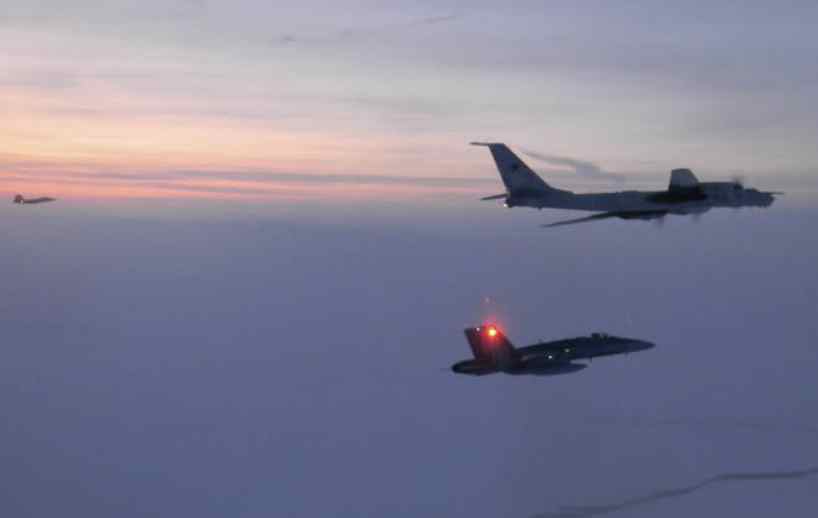Two pairs of F-22 fighter jets, each with an E-3 Airborne Early Warning and Control System aircraft, from the North American Aerospace Defense Command (NORAD) positively identified and intercepted Russian Tu-95 bombers and Su-35 fighter jets entering the Alaskan Air Defense Identification Zone on May 21.
Specifically, two Russian bombers entered the ADIZ and were intercepted by two F-22s while an E-3 provided overall command and control. The bombers exited and then re-entered the Alaskan ADIZ accompanied by two Su-35 fighter jets. NORAD committed an additional two F-22s and E-3 to relieve the initial intercept aircraft. A KC-135 air-to-air refueling aircraft supported both of NORAD’s intercept teams.
[content id=”79272″]
The Russian aircraft remained in international airspace and at no time entered United States or Canadian sovereign airspace. NORAD has intercepted an average of approximately six to seven Russian sorties annually entering its ADIZ since Russia resumed long range aviation patrols in 2007. This is the fourth and fifth intercepts this year and the second day in a row that Russian bombers have flown into the Alaskan ADIZ.
NORAD employs a layered defense network of radars, satellites, and fighter aircraft to identify aircraft and determine the appropriate response. The identification and monitoring of aircraft entering a US or Canadian ADIZ demonstrates how NORAD executes its aerospace warning and aerospace control missions for the United States and Canada.
Operation NOBLE EAGLE is the name given to the military response to the terrorist attacks of September 11, 2001, and applies to all air sovereignty and air defense missions in North America. NORAD is a binational command focused on the defense of both the U.S. and Canada, and draws on forces from both countries.
Source: NORAD







